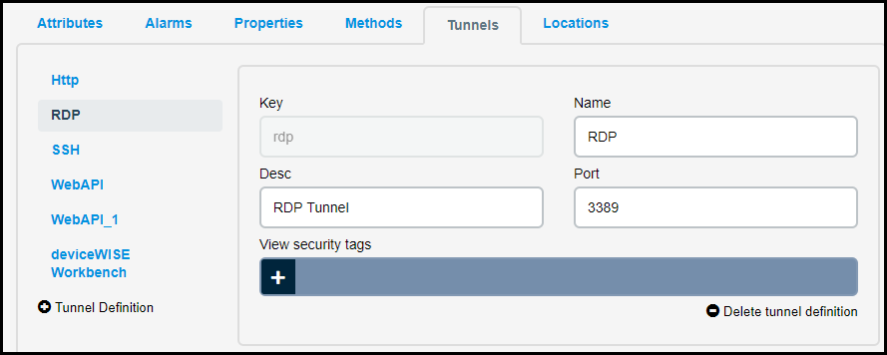A Tunnel establishes an authorized connection between your local application that resides on your host and with the remote device. A Tunnel Server is deployed on the remote device that receives connection requests from the Portal through Tunnel manager and communicates with an edge device. It is possible to establish the connection through the following protocols: HTTP, RDP, SSH, WebAPI or Workbench (TR50). The protocol to set up the connection is defined in the Thing definition. For more information on setting up the connection, see Defining Tunnels. The local host IP address is the address on which the tunnel manager listens for active connections. The Remote device (End Point) IP address is the address of the edge remote device.
The following setup shows RDP (Remote Desktop Protocol as Tunnel) to access a remote PC (Actual host) through your local PC (Virtual host).

In order to setup this in the Management Portal:
| Action | Description | |
|---|---|---|
| 1. | Setup the Tunnel |
The Tunnels are defined in the Thing
Definition. For more information about
defining Tunnels, see Defining Tunnels. For the above example, the
tunnel is defined as |
| 2. | Add the Actual and Virtual host | While adding or editing a
thing add the Tunnel actual host and
the Tunnel virtual host. |
| 3. | Start the Tunnel Manager |
Launch the Tunnel manager and open
the tunnel for the communication. For
more information on Launching the
Tunnel Manager, see Opening
tunnel. When there are tunnels established, the Tunnel Manager periodically sends API calls (tunnel history) to retrieve a list of tunnels that have been successfully opened on your account. |

